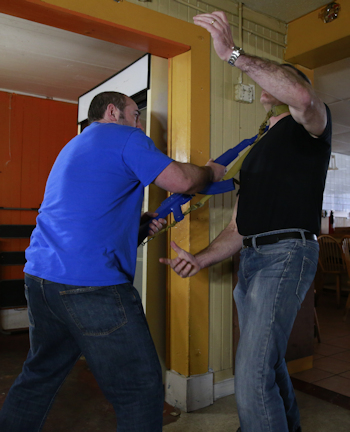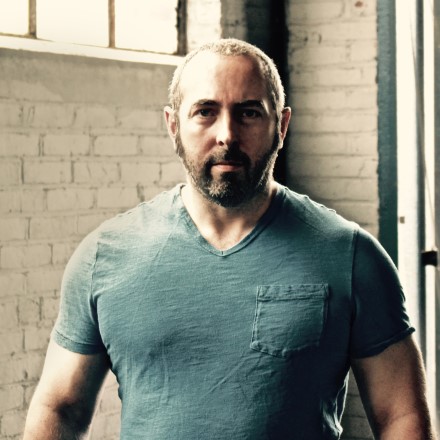Terrorist Rampage Killings & Active Shooters
 When somebody starts shooting in a populated area, it matters little whether their actions are politically, religiously, or egotistically motivated; you
are in a dangerous situation that needs to be dealt with. Unlike workplace or school shootings, terrorist active shooter incidents are almost impossible
to predict. In a school, college, or workplace, it is often possible to see the emotional and mental changes that occur as an individual begins to plan
and move towards executing their act(s) of violence. With acts of terrorism, which target groups, it is generally only the intelligence agencies that
have a chance of predicting and preventing an attack.
When somebody starts shooting in a populated area, it matters little whether their actions are politically, religiously, or egotistically motivated; you
are in a dangerous situation that needs to be dealt with. Unlike workplace or school shootings, terrorist active shooter incidents are almost impossible
to predict. In a school, college, or workplace, it is often possible to see the emotional and mental changes that occur as an individual begins to plan
and move towards executing their act(s) of violence. With acts of terrorism, which target groups, it is generally only the intelligence agencies that
have a chance of predicting and preventing an attack.
Terrorist groups want to achieve several things when they engage in an act of violence, such as an active shooter incident. Firstly, they want to take revenge on a group that they believe is oppressing them, or preventing them from accomplishing their religious, political or economic goals. Acts of terrorism are punishments for perceived wrongs. It is easy to forget this when we look at a group’s or movement’s aims, and try to understand their motivations. The IRA carried out bombings on the UK mainland as a form of punishment for the stationing of troops in Northern Ireland, and for the way said troops were believed to have unfairly treated the Catholic population. The two planes that flew into the World Trade Center on 9/11, were punishments against the American people, whose military were stationed in Saudi Arabia (infidels in the holy land). The killer who drove a truck into the crowds in Nice, France, killing 86 people, was punishing the French people for France’s military actions against ISIS/ISIL. Terrorism is primarily an act of revenge, with the secondary goal of trying to implement and effect change in a group’s or country’s behavior. Al-Qaeda’s goals are simple; to drive out the US, and US influences, from Muslim countries (primarily Saudi Arabia), and to destroy Israel. It’s method: to keep punishing the US (and its allies), until this happens.
 Alongside punishment, another primary goal of a terrorist action is the creation of a culture of fear – this is something that ISIS and AQ (Al-Qaeda) have
only recently begun to realize and understand. AQ, ISIS, and Islamist terror groups, traditionally looked for big and significant targets e.g. landmarks
such as the Twin Towers, significant military targets such as warships, events such as the Boston Marathon, etc. These resulted in big headlines, got media
attention, and made sure that the group committing such acts grabbed the headlines, and the world’s attention. However, they did little to create a culture
of fear, in the locations they targeted. The Boston Marathon Bombings affected the city in terms of the community and in the population feeling it had been
attacked, however daily life in the weeks and months that followed soon resumed its normal pace e.g. the daily commute, the school run, watching the
Patriots or the Bruins in a bar, etc. weren’t really affected. The Tsarnaev brothers’ attack was on an event (a significant and impactful one) not on daily l
ife - something that Islamist terror groups are beginning to understand.
Alongside punishment, another primary goal of a terrorist action is the creation of a culture of fear – this is something that ISIS and AQ (Al-Qaeda) have
only recently begun to realize and understand. AQ, ISIS, and Islamist terror groups, traditionally looked for big and significant targets e.g. landmarks
such as the Twin Towers, significant military targets such as warships, events such as the Boston Marathon, etc. These resulted in big headlines, got media
attention, and made sure that the group committing such acts grabbed the headlines, and the world’s attention. However, they did little to create a culture
of fear, in the locations they targeted. The Boston Marathon Bombings affected the city in terms of the community and in the population feeling it had been
attacked, however daily life in the weeks and months that followed soon resumed its normal pace e.g. the daily commute, the school run, watching the
Patriots or the Bruins in a bar, etc. weren’t really affected. The Tsarnaev brothers’ attack was on an event (a significant and impactful one) not on daily l
ife - something that Islamist terror groups are beginning to understand.
In the UK in the 1970’s and 80’s, a car parked outside a pub caused a level of fear and anxiety. It could belong to somebody drinking inside, or it could be one of the IRA’s many car bombs. For a period in the 1990’s, suicide bombers targeting buses in Israel was a regular occurrence. In both countries, terrorists have targeted and blown up shopping malls. If every time you got on a bus, went to a bar/pub, or visited a shopping mall, you considered the possibility of being the victim of a terrorist act, your daily life would be directly affected. Terrorist organizations – and individuals – learn from each other, sometimes merely by watching each other, and sometimes more directly; it is well known that members of the IRA trained members of the Colombian FARC. In 2015/2016, fundamental Islamist preachers in the West Bank and Gaza, urged their listeners to acquire a knife, and stab an Israeli citizen. The result was an attack on Israeli daily life – at any time somebody may attack you, trying to stab and hack you to death. Everybody became a target, and everyone’s routine and daily life was affected. Simple things began to have risks associated with them; walking down the street had a risk, going into a shop had a risk, etc.
In the US, it’s relatively easy to acquire a shotgun, a semi-automatic firearm, or a high-powered rifle; also, ammunition isn’t limited. It’s relatively easy to put these things in a bag, and drive to a shopping mall or other public space. The gun, in America, is like the knife in the occupied territories in Israel; it’s easily acquired and simple to use. Anybody can become a terrorist. As ISIS and other groups have started to realize that true terror is caused when everyday life is disrupted, a shift from the well-planned “large” operation with spectacular newsworthy events, towards simple active shooter incidents, start to take place. The amount of time, resources and planning it takes to fly two planes into the World Trade Center, compared with that which is necessary to shoot a dozen civilians in a shopping mall, is incomparable. Ten people, killing ten people using firearms, creates a higher body count and generates more fear than one Boston Marathon Bombing, and that is the future of terrorism in the US.
It would also be wrong to simply talk about Islamist terrorism in the US, as there are also Black and White Separatist movements, which are violently pushing their own agendas. It takes skills, knowledge and usually training of some kind to make a bomb; but it only takes intent to pick up a gun and start shooting (you can fire a gun with no training and still be effective with it). Intent and motivation can easily be fostered and propagated, through an online relationship. Give a person a cause to believe in and they will take action. Unfortunately, this may see us dealing with ever more active shooter incidents.
You are still more likely to be mugged than randomly shot at, however active shooter incidents are categorized as low risk, high consequence events; you may not be likely to face them, but if you do, it’s serious, and often deadly. The good news is that there are practical steps you can take to ensure your safety – a gunman is easier to deal with than a bomb, or a truck, etc. If you are interested in learning what to do if you get caught up in a terrorist shooting, please take a look at our training options below.
Active Shooter & Terrorism Awareness Training
In these programs, our active shooter courses are taught as part of our terrorism awareness training – there is a big difference between terrorism awareness and counter/anti-terrorism i.e. our training programs are not intended or aimed at teaching individuals how to intercept and prevent terrorist activities and events, but to educate about target selection, surveillance, the attack cycle, etc., so that they can understand active shooter incidents within these contexts, and the differences between the tactics employed in these events and those that take place in schools or workplaces, etc., such as dealing with multiple shooters, incidents that involve hostage taking, etc. Engaging in this type of training will help you employees and members be better prepared for an active shooter incident, should it occur.
Our training is delivered in a non-sensational manner, and can take the form of lectures and presentations, as well as physical scenario-based training, depending on the needs and requirements of the audience it is being delivered to. If your organization or group has specific security concerns around criminal and terrorist activities, we are happy to talk with you about our consultancy services to help assess the risk(s) you face and target-harden your group or business, by reducing vulnerabilities, etc. For more information about these services, or courses/training programs that we run around active shooter threats, please contact us by clicking here.
Location
Krav Maga Yashir
165 New Boston St (Unit E)
Woburn, MA 01801
Active Shooter Boston Instructor
Gershon Ben Keren

Subscribe
Sign up with your email address to receive news and updates.